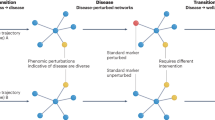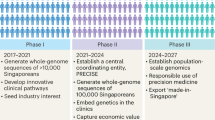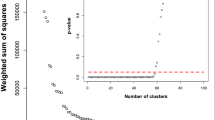Abstract
The earliest observations on population patterns of disease and how they might inform medical practice probably occurred during the 17th century, and they continue to the present day, with increasing relevance to nutritional and infectious diseases, and cancer and other chronic diseases. Chronic-disease methods grew out of infectious-disease epidemiology, in which both field and laboratory methods are used. In diseases where intermediate biology was not initially observable (particularly cancer), record-based and interview-based epidemiology revealed some key exposures (e.g. smoking and radiation). With measurable intermediates (e.g. blood lipids), cardiovascular epidemiology also yielded inferences on causal pathways. Important changes that are remaking the field of epidemiology and will ultimately influence all aspects of medical practice include the following: high-throughput genotyping, allowing genetic and gene–environment causes of disease to be identified; high-throughput proteomics, which should allow the development of early-detection methods; new tools for the measurement of exposures; and a molecular basis for disease taxonomy. These new methods will allow a much better understanding of both the etiology and the intermediate stages of disease; however, new methods do not obviate the necessity for good study design, especially the need to be clear on the difference between observation and experiment. The greatest opportunities to inform medical practice come from the application of new methods to large-scale human observational studies, which include genetics, environment, early-detection markers, molecular classification of outcome, and treatment data. Improved molecular classification of disease will allow smaller, focused clinical trials to be undertaken and, ultimately, the tailoring of treatment to the biological profile of patient and disease.
This is a preview of subscription content, access via your institution
Access options
Subscribe to this journal
Receive 12 print issues and online access
$209.00 per year
only $17.42 per issue
Buy this article
- Purchase on Springer Link
- Instant access to full article PDF
Prices may be subject to local taxes which are calculated during checkout



Similar content being viewed by others
References
Ibrahim M and Spitzer W (1979) The case–control study. Consensus and controversy. J Chron Dis 32: 1–144
Takaki K (1887) Kakke or Japanese Beri-Beri. Lancet 2: 189–190
Carpenter K (2003) A short history of history of nutritional science: part 2 (1885–1912). J Nutr 133: 975–984
Singh MK and Brillmann J (online 10 June 2005) Yellow Fever [http://www.emedicine.com/emerg/topic645.htm] (accessed 11 October 2005)
Reed W and Agramonte A (1983) Landmark article. Feb 16, 1901: The etiology of yellow fever. An additional note. By Walter Reed, Jas. Carroll and Aristides Agramonte. JAMA 250: 649–658
Kromhout D et al. (1993) The Seven Countries Study. A Scientific Adventure in Cardiovascular Epidemiology. Minneapolis: University of Minnesota
Hill ID et al. (1966) Mortality among asbestos workers. Proc R Soc Med 59: 59–60
Doll R and Hill AB (1950) Smoking and carcinoma of the lung. BMJ 2: 739–748
Armitage P et al. (1959) Dose–response relationship in radiation leukaemia. Nature 184 (Suppl 21): S1669–S1670
Rotkin I (1973) A comparison review of key epidemiological studies in cervical cancer related to current searches for transmissible agents. Cancer Res 33: 1353–1367
MacMahon B et al. (1970) Age at first birth and breast cancer. Bull WHO 43: 209–221
Cole P et al. (1976) Oestrogen profiles of parous and nulliparous women. Lancet 2: 596–597
Cuzick J et al. (1992) Human papillomavirus type 16 DNA in cervical smears as predictor of high-grade cervical cancer. Lancet 339: 959–960
Clarke E and Anderson T (1979) Does screening by 'Pap' smears help prevent cervical cancer? A case–control study. Lancet 2: 1–4
Morson B (1974) The polyp-cancer sequence in the large bowel. Proc R Soc Med 67: 451–457
Vogelstein B et al. (1989) Allelotype of colorectal carcinomas. Science 244: 207–211
Groden J et al. (1991) Identification and characterization of the familial adenomatous polyposis coli gene. Cell 66: 589–600
Nishisho I et al. (1991) Mutations of chromosome 5q21 genes in FAP and colorectal cancer patients. Science 253: 665–669
Miki Y et al. (1994) A strong candidate for the breast and ovarian cancer susceptibility gene BRCA1. Science 266: 66–71
Malkin D et al. (1990) Germline p53 mutations in a familial syndrome of breast cancer, sarcomas, and other neoplasms. Science 250: 1233–1238
Fishel R et al. (1993) The human mutator gene homolog MSH2 and its association with hereditary nonpolyposis colon cancer. Cell 75: 1027–1038
Leach FS et al. (1993) Mutations of a mutS homolog in hereditary nonpolyposis colorectal cancer. Cell 75: 1215–1225
Peltomaki P et al. (1993) Genetic mapping of a locus predisposing to human colorectal cancer. Science 260: 810–812
Epplein M et al. (2005) Genetic services for familial cancer patients: a follow-up survey of National Cancer Institute Cancer Centers. J Clin Oncol 23: 4713–4718
Salsburg D (2001) The Lady Tasting Tea: How Statistics Revolutionized Science in the Twentieth Century. New York: WH Freeman and Company
Caporaso N (1999) Selection of candidate genes for population studies. IARC Sci Publ 148: 23–36
Pharoah PD et al. (2004) Association studies for finding cancer-susceptibility genetic variants. Nat Rev Cancer 4: 850–860
Etzioni R et al. (2003) The case for early detection. Nat Rev Cancer 3: 243–252
Lampe JW et al. (2004) Signatures of environmental exposures using peripheral leukocyte gene expression: tobacco smoke. Cancer Epidemiol Biomarkers Prev 13: 445–453
Bittner M et al. (2000) Molecular classification of cutaneous malignant melanoma by gene expression profiling. Nature 406: 536–540
van't Veer LJ et al. (2002) Gene expression profiling predicts clinical outcome of breast cancer. Nature 415: 530–536
Lynch TJ et al. (2004) Activating mutations in the epidermal growth factor receptor underlying responsiveness of non-small-cell lung cancer to gefitinib. N Engl J Med 350: 2129–2139
Paez JG et al. (2004) EGFR mutations in lung cancer: correlation with clinical response to gefitinib therapy. Science 304: 1497–1500
Potter JD and Rebbeck TR Encyclopedia of Medical Genomics and Proteomics, in press
Zhang Y et al. (1994) Positional cloning of the mouse obese gene and its human homologue. Nature 372: 425–432
Weston A et al. (1998) CYP17 genotype and breast cancer risk. Cancer Epidemiol Biomarkers Prev 7: 941–944
Haiman CA et al. (1999) The relationship between a polymorphism in CYP17 with plasma hormone levels and breast cancer. Cancer Res 59: 1015–1020
Helzlsouer KJ et al. (1998) Association between glutathione S-transferase M1, P1, and T1 genetic polymorphisms and development of breast cancer. J Natl Cancer Inst 90: 512–518
Shields PG et al. (1998) Dopamine D4 receptors and the risk of cigarette smoking in African-Americans and Caucasians. Cancer Epidemiol Biomarkers Prev 7: 453–458
Lerman C et al. (1999) Evidence suggesting the role of specific genetic factors in cigarette smoking. Health Psychol 18: 14–20
Lerman C et al. (2000) Interacting effects of the serotonin transporter gene and neuroticism in smoking practices and nicotine dependence. Mol Psychiatry 5: 189–192
Sabol SZ et al. (1999) A genetic association for cigarette smoking behavior. Health Psychol 18: 7–13
Miller M 3rd et al. (2001) Genetic variability in susceptibility and response to toxicants. Toxicol Lett 120: 269–280
Vineis P (2004) Individual susceptibility to carcinogens. Oncogene 23: 6477–6483
Bigler J et al. (2001) CYP2C9 and UGT1A6 genotypes modulate the protective effect of aspirin on colon adenoma risk. Cancer Res 61: 3566–3569
Ulrich CM et al. (2002) Thymidylate synthase promoter polymorphism, interaction with folate intake, and risk of colorectal adenomas. Cancer Res 62: 3361–3364
Ulrich CM et al. (1999) Colorectal adenomas and the C677T MTHFR polymorphism: evidence for gene-environment interaction? Cancer Epidemiol Biomarkers Prev 8: 659–668
Ulrich CM et al. (2001) Pharmacogenetics of methotrexate: toxicity among marrow transplantation patients varies with the methylenetetrahydrofolate reductase C677T polymorphism. Blood 98: 231–234
Robien K et al. (2004) Methylenetetrahydrofolate reductase genotype affects risk of relapse after hematopoietic cell transplantation for chronic myelogenous leukemia. Clin Cancer Res 10: 7592–7598
Bodmer WF et al. (1987) Localization of the gene for familial adenomatous polyposis on chromosome 5. Nature 328: 614–616
Potter JD (2001) At the interfaces of epidemiology, genetics, and genomics. Nat Rev Genet 2: 142–147
Hansen MF et al. (1985) Osteosarcoma and retinoblastoma: a shared chromosomal mechanism revealing recessive predisposition. Proc Natl Acad Sci USA 82: 6216–6220
Langholz B et al. (1999) Cohort studies for characterizing measured genes. J Natl Cancer Inst Monogr 26: 39–42
Thomas A et al. (1999) Familial associations between cancer sites. Comput Biomed Res 32: 517–529
Rebbeck TR et al. (2004) Genetic variation and cancer: improving the environment for publication of association studies. Cancer Epidemiol Biomarkers Prev 13: 1985–1986
Hanash S (2003) Disease proteomics. Nature 422: 226–232
Perou CM et al. (2000) Molecular portraits of human breast tumours. Nature 406: 747–752
Alon U et al. (1999) Broad patterns of gene expression revealed by clustering analysis of tumor and normal colon tissues probed by oligonucleotide arrays. Proc Natl Acad Sci USA 96: 6745–6750
Ransohoff DF (2004) Rules of evidence for cancer molecular-marker discovery and validation. Nat Rev Cancer 4: 309–314
Ransohoff DF (2005) Bias as a threat to the validity of cancer molecular-marker research. Nat Rev Cancer 5: 142–149
Hu J et al. (2005) The importance of experimental design in proteomic mass spectrometry experiments: some cautionary tales. Brief Funct Genomic Proteomic 3: 322–331
Hedayat AS and Stufken J (2003) Optimal and efficient crossover designs under different assumptions about the carryover effects. J Biopharm Stat 13: 519–528
Prevo LJ et al. (1999) p53-mutant clones and field effects in Barrett's esophagus. Cancer Res 59: 4784–4787
Potter JD (2003) Epidemiology, cancer genetics and microarrays: making correct inferences, using appropriate designs. Trends Genet 19: 690–695
Petricoin EF et al. (2002) Use of proteomic patterns in serum to identify ovarian cancer. Lancet 359: 572–577
Potter J (2003) National Biospecimen Network and Public Health in National Biospecimen Network Blueprint, 99–101 (Eds Friede A et al.) Durham, NC, USA: Constella Group, Inc.
Margulies M et al. (2005) Genome sequencing in microfabricated high-density picolitre reactors. Nature 437: 376–380
Tasevska N et al. (2005) Urinary sucrose and fructose as biomarkers for sugar consumption. Cancer Epidemiol Biomarkers Prev 14: 1287–1294
Weis BK et al. (2005) Personalized exposure assessment: promising approaches for human environmental health research. Environ Health Perspect 113: 840–848
Adam BL et al. (2002) Serum protein fingerprinting coupled with a pattern-matching algorithm distinguishes prostate cancer from benign prostate hyperplasia and healthy men. Cancer Res 62: 3609–3614
Covell D et al. (2003) Molecular classification of cancer: unsupervised self-organizing map analysis of gene expression microarray data. Mol Cancer Ther 2: 317–332
Golub TR et al. (1999) Molecular classification of cancer: class discovery and class prediction by gene expression monitoring. Science 286: 531–537
Jass JR et al. (2002) Emerging concepts in colorectal neoplasia. Gastroenterology 123: 862–876
Paz MF et al. (2003) A systematic profile of DNA methylation in human cancer cell lines. Cancer Res 63: 1114–1121
Wang ZC et al. (2004) Loss of heterozygosity and its correlation with expression profiles in subclasses of invasive breast cancers. Cancer Res 64: 64–71
Author information
Authors and Affiliations
Ethics declarations
Competing interests
The author declares no competing financial interests.
Rights and permissions
About this article
Cite this article
Potter, J. Epidemiology informing clinical practice: from bills of mortality to population laboratories. Nat Rev Clin Oncol 2, 625–634 (2005). https://doi.org/10.1038/ncponc0359
Received:
Accepted:
Issue Date:
DOI: https://doi.org/10.1038/ncponc0359
This article is cited by
-
Ensuring long-term sustainability of existing cohorts remains the highest priority to inform cancer prevention and control
Cancer Causes & Control (2010)



